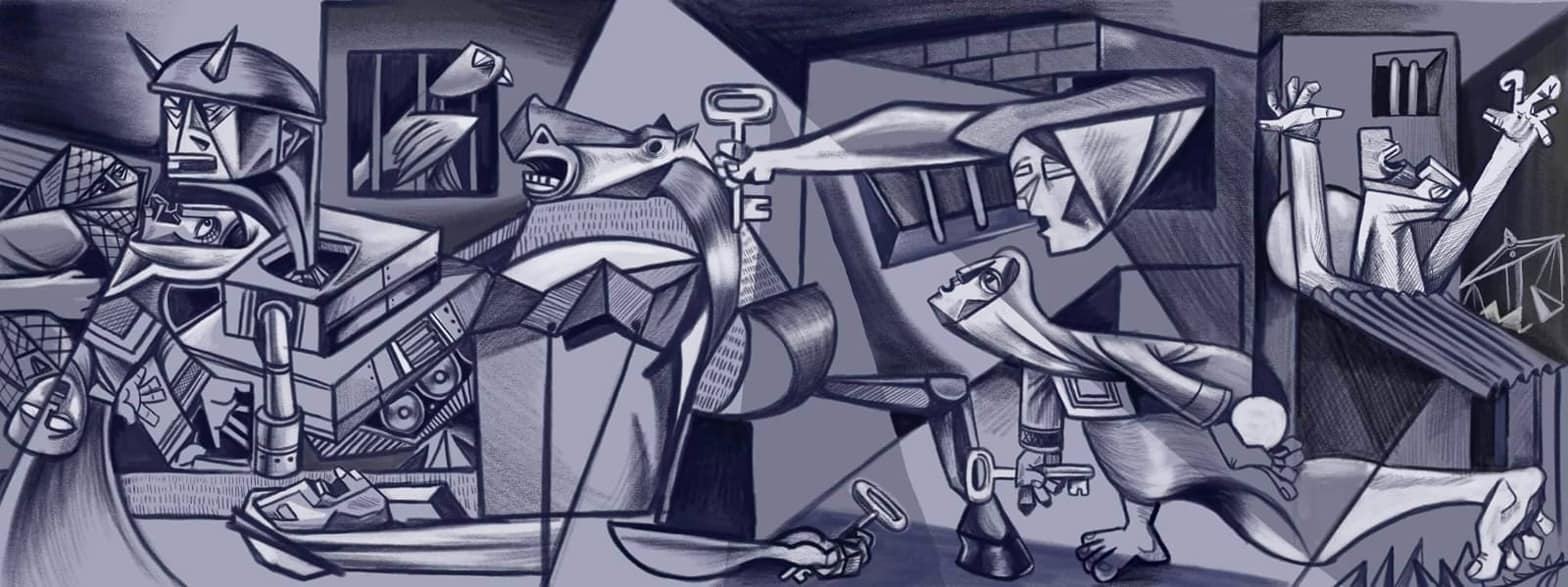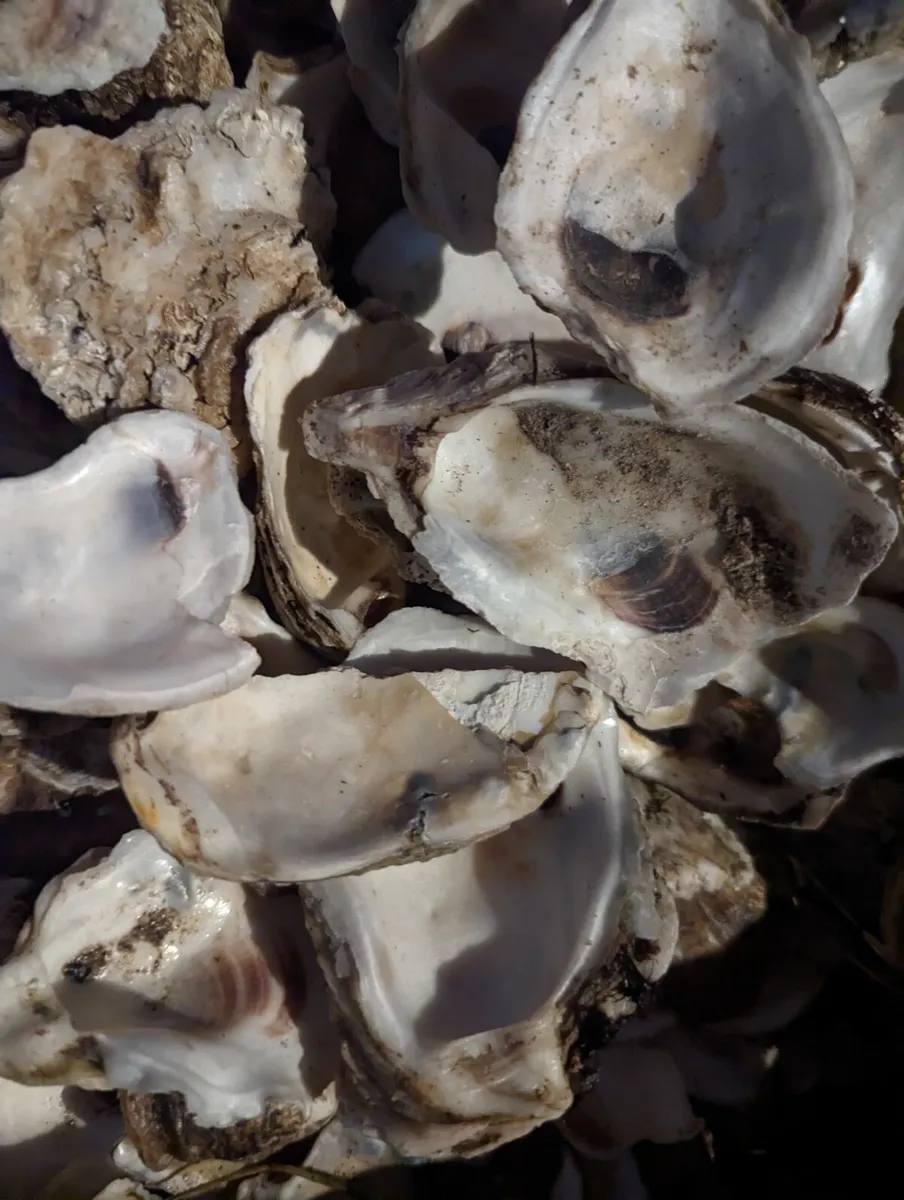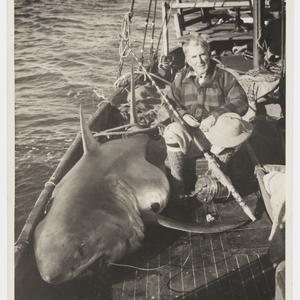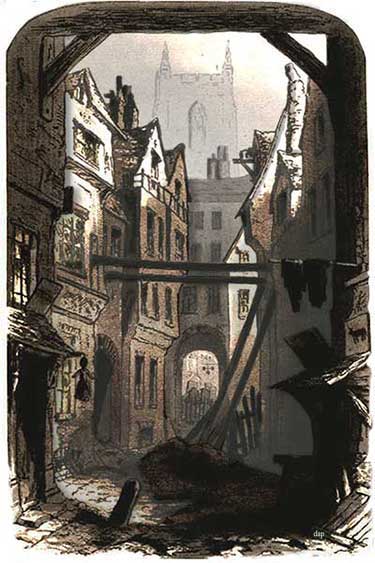 Remembering Guernica. A Palestinian, Mohammed Saabinah updates Guernica; courtesy Washington Post.
Remembering Guernica. A Palestinian, Mohammed Saabinah updates Guernica; courtesy Washington Post.
The First Time Magazine was Published in 1923 also.
The New England Journal of Medicine has celebrated its Centennial Year in 2023.
 As reported in the Boston Globe, among the strangest case studies (this one published in 2020) was the man who died from eating too much liquorice. The 54-year-old had a poor diet, ate mostly lollies, and had recently switched to consuming two to three bags of black liquorice a day. But the case pointed to the hazards of glycyrrhizic acid, a plant extract found in liquorice. If taken in large quantities, the substance can cause potassium levels to plummet, which in this case prompted a cardiac arrest.
As reported in the Boston Globe, among the strangest case studies (this one published in 2020) was the man who died from eating too much liquorice. The 54-year-old had a poor diet, ate mostly lollies, and had recently switched to consuming two to three bags of black liquorice a day. But the case pointed to the hazards of glycyrrhizic acid, a plant extract found in liquorice. If taken in large quantities, the substance can cause potassium levels to plummet, which in this case prompted a cardiac arrest.
Batemans Bay
My father and mother loved Batemans Bay, located as it is on the Clyde River on the South Coast of New South Wales. At that time there was no bridge across the Clyde River, and one was not constructed until 1956. Crossings thus were dependent on the car ferry and gave a sense of detachment from the settlements further north along the coast.

 My parents discovered the town after the War, when they used to drive to Sydney at Christmas or during school holidays. They enjoyed being able to go to the Government wall there, with their special short blade knife, a pepper shaker and a lemon or two and feast on the rock oysters clinging to the wall. I watched, wondering why my parents wanted to eat these revolting looking slime in a shell. They looked resignedly at my screwed-up face, and I remember my father saying to my mother, “He’ll learn.” No truer word said as now I’ve been known to wolf down a dozen rock oysters barely taking breath.
My parents discovered the town after the War, when they used to drive to Sydney at Christmas or during school holidays. They enjoyed being able to go to the Government wall there, with their special short blade knife, a pepper shaker and a lemon or two and feast on the rock oysters clinging to the wall. I watched, wondering why my parents wanted to eat these revolting looking slime in a shell. They looked resignedly at my screwed-up face, and I remember my father saying to my mother, “He’ll learn.” No truer word said as now I’ve been known to wolf down a dozen rock oysters barely taking breath.
My father and mother loved the views over the Pacific Ocean past the Toll Gates, the twin islands which were so much a marker of the Batemans Bay identity. Here among the gum trees, they would go for walks thinking about where they would buy a plot of land. It never eventuated, because first my mother had a duodenal ulcer and then breast cancer. Thus, retirement to the coast faded as an option; and my father would not chance his arm at rural practice, even though his medical practice in the outer suburbs of Melbourne had its moments -never boring.
What intrigued me was the string of black and white framed photographs which lined the corridor of the hotel, which were a testament to Zane Grey’s deep sea fishing exploits. Zane Grey was a very successful American author of Westerns, who also became a renowned deep-sea angler around the world. He had sufficient money to afford a camera boat in addition to the boat, Avalon, from which he did his fishing. The camera crew were also expert deep-sea anglers as well his photographer.
He wrote a book about his exploits in Australia in 1936, titled An American Angler in Australia, first published in 1937.
I know virtually nothing about this sport, but Zane Grey who has a deep love affair with Australia, describes his exploits off Bermagui and Batemans Bay. He is a very passionate adversary, but looked askance at the New Zealand habit of harpooning the deep-sea monsters and the Australian practice of shooting when the fish was hooked. He insisted on each catch being gaffed and the tail secured – no mean feat.
Grey had been fishing off New Zealand in the 1920s, and later “discovered”- Australia of which he wrote in An American Angler in Australia:
I was hardly prepared for this land of staggering contrasts, of unbelievable beasts, of the loveliest and strangest birds, of great modern English cities, of vast ranges that rivalled my beloved Arizona, and of endless forestland, or bus, as they call it, never yet adequately described, no doubt because of beauty and wildness beyond the power of any pen to delineate.
Many of the deep-sea fish, the sharks, that he caught are now protected, and the number of these creatures that he hooked would make any modern conservationist shudder, but he was very much of his time, where hooking a shark was to lessen the threat for surfers.
To quote him directly “Well, Mr Man-eater, you will never kill any boy or girl.”
The most memorable description is of his tussle with a huge tiger shark off Sydney Heads, with steamships emerging from the Heads avoiding him and the shark. Eventually he won the battle with the tiger shark, and with difficulty beached it at Watson’s Bay in front of a large crowd. It took twenty men to drag it on shore, avoiding the flailing tail and the jaws. Several of the men were knocked over by the tail, but the jaws claimed nobody. Eventually, the shark was secured. It was measured at thirteen feet ten inches; weight one thousand and thirty-six pounds.

Zane Grey died two years after this book was published in Catalina, at the age of 77. To think he was an old man fighting sea monsters long before Hemingway was to write of a gentler Cuban fisherman, his Old Man of the Sea, for which he was awarded the Nobel Prize. I wonder how many people remember Zane Grey and his exploits. I would not have, had it not been my parents’ love for Batemans Bay.
Reflections on Violence
Firstly, [attitudes] are influenced partly by the fact that growing ethnocentrism and increasing anomie and alienation are common among elderly and poorly-educated people. The second mechanism consist of finding that people who experience feelings of socio-political senselessness and helplessness have a tendency to look for compensation in authoritarian-paranoid world views. It would seem that authoritarian-paranoid beliefs can be seen as being a mediator between social anomie and political alienation, on the one hand, and ethnocentric attitudes on the other. Radkiewicz, P. (2007) Polish Psychological Bulletin, 38(1), 5–14.
When I was undertaking the course work on my way to a Master of Arts degree, I had one lecturer who was obsessed with the Triptych (anomie, alienation, ethnocentricity).
The text which the class was to study in conjunction with the lecture notes was Reflection on Violence. Georges Sorel was French polemicist, whose view of progress was linked to conflict, almost Trotskyist in the concept of permanent revolution. He recognised the importance of triptych in fulfilling his belief.
In fact, a clue to what Sorel basically argued was that he drew praise from both Lenin and Mussolini.

I was prompted to write about this academic term of my life with Georges Sorel when I read an opinion piece in the Sydney Morning Herald that tried to describe why some people who, in their early career, were labelled “Leftie” and then moved across the political spectrum to become warriors of the right.
The person to me who personified this shift was the journalist, the late Paddy McGuinness, who started off well to the Left, his black garb being recognition of an anarchic streak residing in his persona; and then later in life he became a champion of the right, where his constituency was the far right of political thought. I first met him in his leftist phase when he worked for Bill Hayden in the early 70s.
He was the classic authoritarian, humourless personality, and such people find there is little difference if they are speaking from either of the extremities of the political spectrum. They cannot be wrong; and thus truth is what they say it is to them; democracy nestling the so-called political centre was a symbol of spinelessness, with a haughty dismissal of the diversity of opinion as showing a lack of discipline and a refusal to accept without demur the primacy of the authoritarian belief. Evidence is thus what one believes, and that’s it. You just had to converse with Paddy to recognise the rigidity of his thought process. He was never wrong.
The article in the SMH by Michelle Goldberg, an American journalist who, six years ago as set out in her Wikipedia bio, was forced into retraction of a comment she made in reviewing a book, study of college rape, by another New York journalist, Vanessa Grigoriadis. Her retraction was described by Vanity Fair as a humiliating retreat.
In this recent article reprinted in SMH, she sets up the question of what’s driving lefties to the right? She mentions the “horseshoe theory” as though conversion is a parabola. In fact, the authoritarian personality can exist equally on the left and the right. It is about power without dissent. Democracy is too difficult – having to resolve problems, not assuming one is automatically right without any evidence.
The problem which Goldberg barely touched in the triptych is her tangential comment that “the right has the advantage in appealing to dislocated and atomised people.” In the case of Trump, it is probably due to his opportunism that he has positioned his authoritarianism on the right; but in other situations, where the proletariat was seen to hold the power, then Trump could well have positioned himself there.
However, America has no history of a socialist government. The American characteristic of espousing of the freedom of the individual to do anything he wants in the name of individualism is a cruel trick, where the product of the triptych is unmitigated tyranny in all its forms. Left and right become catchcries, but in the end meaningless. It is the preservation of democracy which is meaningful.
Is Anybody Listening?
I found the following book review of “Review of Family Violence in Australia”; Carol O’Donnell and Jan Craney were joint editors. The author of this book review was Dimity Reed, whom I knew in our teenage years; she later had become a distinguished architect. The year this review was written was 1982, in a then new magazine Australian Society.
The review began (sic):
Fool that I am, I recently flicked on the last two minutes of a TV talent quest. A man waltzed around the studio, clutching to his breast a partner, presumably a fellow seeker after fame.
Suddenly he knocked her to the ground and started kicking her and beating her with his fists. Then he picked her up and tossed her on to the judges’ table, where three respected leaders of showbiz sat laughing.
Not content with the beating given his partner on the dance floor, our ambitious hero threw himself upon her on the table and pummelled her into a heap. Not until he was totally exhausted and sure of some sort of victory did the man desist.
It was at that point that I realized that the man’s partner was a life-size doll.
That programme went to air in Melbourne a week after an intense public awareness campaign about violence between men and women inside families. The compere had done numerous radio interviews to promote the campaign and the TV station has been generous in their support.
What does this indicate? That comperes have short memories? That violence within families had been simply seen as good news items? Or, more ominous, that the right of men to beat women severely and remain unpunished is both the norm and a source of humour?
So long ago; yet so near. I too remember these antics, because much of the humour descended from vaudeville, its humour based on denigration of women.
My wife reminded me of the “wife beater” term. This was the Chesty Bond singlet, which apparently had been worn when a Detroit man in 1947 was arrested for beating his wife to death and was shown wearing a stained singlet.

I am no saint, but I’ve never hit my wife. Convenient objects have been thrown at me on a very few occasions, but in this short review by Dimity, blame for the marital disputes is considered a domestic dispute, unless there is murder. It thus must be that extreme for police involvement. One set of data suggests that, on average, one woman every nine days and one man every month is killed by a current or former partner.
Yet that conceals widespread conflict and violence in the community; and I, like most people, am reluctant to intervene, especially when fists are flying, and knives are flashing. Let’s be frank, nobody is properly trained to intervene. The socially concerned may preach to audiences, often inappropriate because the audience have the skills to deal with conflict or well-honed sophistry of denial of such involvement. In other words, the members of these audiences nod their heads sagely and issue “the tut -tut” of the judgemental. Therefore, mostly conflict is allowed for the parties to resolve themselves. This leaves a considerable body of people who do not have the skills to handle conflict.
And even if the wife beaters were listening, they probably would not know what the jargon meant. The gap is just too great.
Whitewash is a Woman on the Green
In the SMH of Tuesday 20 October 2020, Cathy Wilcox drew a cartoon depicting two women sitting on a park bench. One was saying to the other:
“Gladys is not to blame for Daryl Maguire’s dodgy dealings – she just fell for a dud boyfriend … “
The other responded: “Judging by her record on stadiums, the Powerhouse, Crown Casino, heritage destruction, land clearing, loss of koala habitat and now council grants, she must’ve had a string of dud boyfriends …”
Sometime the cartoonist’s observation is too true to be funny. In this case Cathy Wilcox exhibits in her unerring drawing that mixture of anger and disdain for Gladys with the “Poor Me” look. To Gladys’ bill of stuff-ups can be added her involvement in cooking up the Rozelle Road Pasta.
The Commission (ICAC) reported on the relationship, nearly three years after the Wilcox cartoon of 40 words was published; and two years after the hearings completed, written up in a 700-page report.
However, the following embodies the findings against Gladys Berejiklian, once the Premier of NSW.
The Commission finds that Ms Berejiklian engaged in serious corrupt conduct by breaching public trust in 2016 and 2017 through exercising her official functions in relation to funding promised and/or awarded to ACTA, without disclosing her close personal relationship with Mr Maguire, when she was in a position of a conflict of interest between her public duty and her private interest, which could objectively have the potential to influence the performance of her public duty. The Commission also finds that in the same period, Ms Berejiklian partially exercised her official functions, in connection with funding promised to ACTA, influenced by the existence of her close personal relationship with Mr Maguire.
On the surface, she is in disgrace, but somehow with her “Miss Goodie-Two-Shoes” image and the Australian Financial Review’s eulogy of her dressed in vestal virginal white, admittedly with the “furred up” look of a good-time girl seems to have protected her from what should have been community contumely. Then she has the gall to appeal the ICAC findings, for what? Her right to do so?
The Conversation wondered about the secret life of this 50-year-old woman, who retains the air of the captain that she was at high school in North Ryde. She told no one about this relationship with Maguire, not even her own, very close family.
This is a litany of a clearly dysfunctional person. Instead of her history being treated with understandable caution given that she was hardly in need of money, Berejiklian was hired by Optus and made managing director of Optus’s business division, a position she has held since last year. She was close to the action thus when the disastrous outage occurred which cost an insensitive CEO her job, this ex-school captain survived. Given her form, why would we be surprised! Are there any missteps in store for us involving her involvement in anything.
But Berejiklian is only symptomatic of the malaise which has been inflicted upon Australia. Setting up Inquiries, culminating in the “majesty” of a Royal Commission was a serious endeavour to find the truth of the situation – not to be taken lightly. But now they are increasingly irrelevant for politicians and police, who just ignore the findings while mouthing the mantra “that they will take the matter seriously”. These inquiries have become a smokescreen designed to lengthen the process, so why it is being set up is lost in the voracious news cycle. Australia gives the impression of being governed by the public relations crew, who homogenise policy into trivial blah.

Gladys Berejiklian had not been on her own, even if ever wronged in her own eyes, she exists in her version of “Bleak House”, even if she believes herself to be Esther Summerson.
The problem in writing about this Australian political cancer is that it is metastasising out of control because the therapeutic agents are not sufficient to contain it. These therapeutic processes are of another age, when the cancer was not as virulent and the processes were sufficient to contain and even heal. But no longer, and with climate changing, how many years will it be before this cachexia of misrule and greed kills the country fabric. Once malignant cachexia kicks in, it’s irreversible, just as it is with climate change.
Not an Afterthought
I have met some remarkable women in my life, but as I am getting towards the tail of my life, I thought I would list the six women I would have wished to have met, but for various reasons (mainly because they existed in another generation) I have not been able to do so.

- Vanessa Redgrave – UK actor
- Katherine Mansfield – NZ-born author
- Lena Horne – US singer
- Rosa Luxemburg – Polish-born activist
- Leni Riefenstahl – German filmmaker & photographer
- Grace Cossington Smith – Australian painter
Mouse Whisper
I’m not sure this says much about anything including national characteristics.
A Swede and a Finn went into a bar. The Swede ordered a vodka, said “Skål” and downed the vodka. The Finn said nothing and also downed the vodka. The Swede repeated the toast three time and still the Finn said nothing although the Swede every time said “Skål” and downed the vodka. The Finn downed his vodka and continued to say nothing. On the fourth time, the Swede raised his glass and said “Skål”.
This apparently was too much for the Finn, because he burst out “Se on teidän ruotsalaisten ongelma, te puhutte liikaa.”
or in English parlance: “That’s the trouble with you Swedes, you talk too much.”
Eight or ten words! Take your pick.

